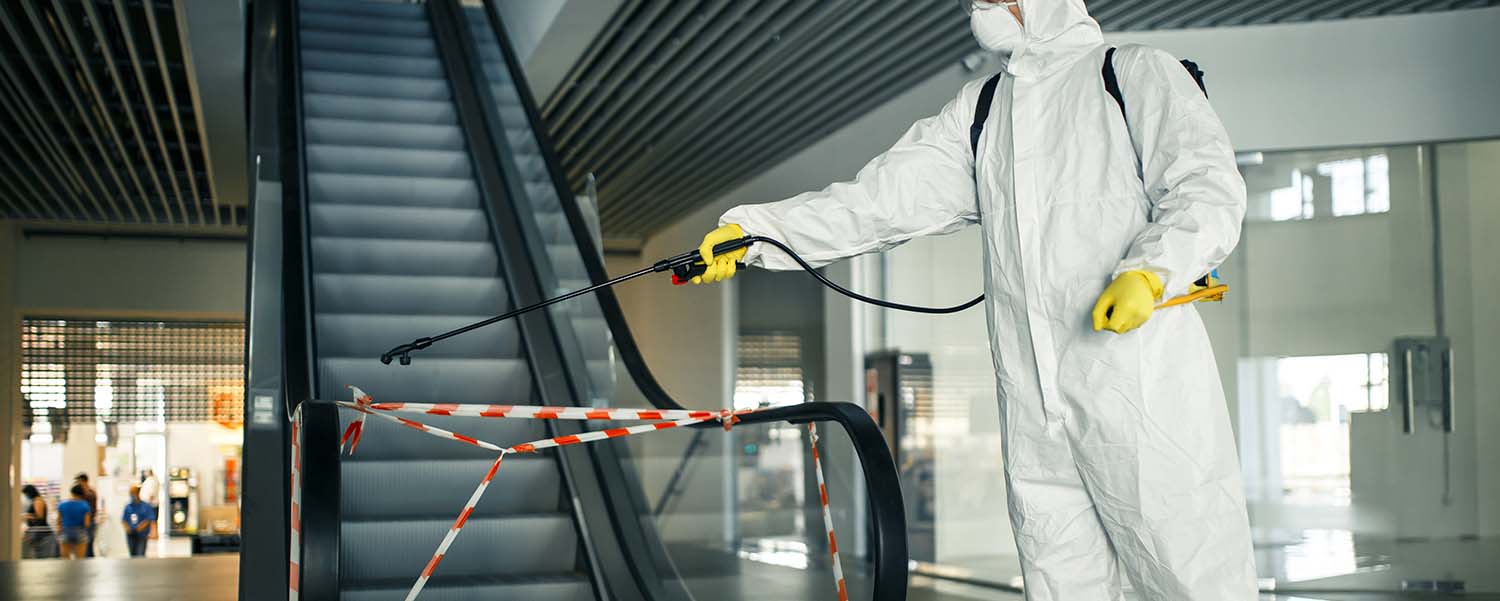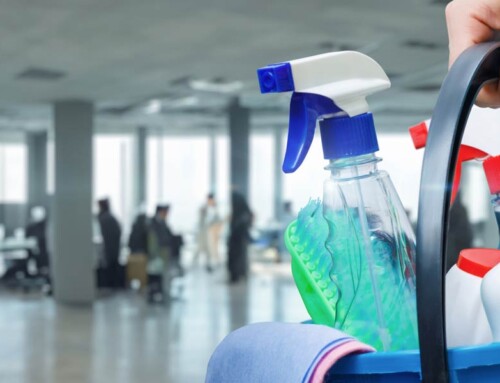The Ups of Escalator Cleaning

If you have been to the Wheaton Station of the Washington, D.C. Metro system, you have likely seen something not found anywhere else in the Western Hemisphere. The station has the two longest escalators on this side of the Atlantic Ocean. The pair are 230 feet long with a vertical rise of 115 feet. On first sight, some people are afraid to get on them, taking the elevators instead. However, should you decide to take this ride, expect it to take approximately three minutes to ascend or descend without walking.
Escalators are found in all types of buildings, from subway stations and hotels to office buildings, libraries, and stores. We may not think about escalators much in the professional cleaning industry, but building occupants do. You’ve probably heard that in most cases, the first thing people see upon entering a facility is the floor. Typically this is because they are looking down for safety. And very often, they make a judgment about the entire facility based on the floor’s condition.
The same goes for escalators. When you are riding an escalator, you also look down for safety, and many people continue to look down during the entire ride. If the escalator is soiled, dirty, or dusty, it can give building occupants a negative impression about the facility as well. So if escalators are important to the overall impression building users have of a location, how do we keep them clean?
The Escalator Cleaning Challenges
First, we should realize there are certain challenges associated with cleaning escalators, including:
- Invariably, escalators must be cleaned late at night after a facility is closed and be clean and operational when the facility reopens in the morning.
- Escalators are not flat. Some cleaning workers have tried to clean escalators by dust- or damp- mopping them as if they were a flat floor. While this may work to remove a spill or some soiling, it will not work to thoroughly clean the escalator.
- The steps on an escalator have grooves to help promote safety. Unfortunately, these also collect soil and dust. Similar to the grout surrounding tile, soil and moisture can get lodged in the grooves, and the longer they stay there, in many cases, the harder they are to remove.
- The grooves can vary in length, meaning each individual escalator may have its own unique cleaning challenges.
While these issues might make effective escalator cleaning a problem, we must remember that a solution exists. Fortunately, there are ways to clean escalators that are fast, cost-effective, and require very little effort, which presents a lucrative opportunity for cleaning organizations.
The Machine Itself
At one time, escalators were cleaned by removing the steps, taking them off site for pressure washing, waiting for them to dry, and then reinstalling them. This was effective but time consuming, and costly as a result. Some escalators are cleaned by cleaning each individual step. This is not as effective, and it is a slow, time-consuming process as well.
Today, many cleaning professionals use what is often referred to as an automatic escalator cleaning system. These are considered “hands-off” cleaning systems because all that is necessary is properly installing the unit. From there, users of these types of cleaning machines typically do the following:
- Start with the escalator off and install the cleaning system at the base of the escalator.
- Place a safety warning cone at the base of the escalator.
- Lower the cleaning head onto the escalator and activate the escalator. The steps should be moving away from the machine. If this is not the case, stop the escalator and reverse its direction.
- The system’s built-in vacuum collects dirt and debris on the steps, which is the first phase in the cleaning process.
- Brushes and pads loosen and remove soils embedded in the treads, which are then vacuumed up.
- There is no set time period to let the machine run; cleaning time depends on how soiled the escalator is and its length.
- The final phase is to lower the polishing pads and allow the machine to further remove soiling and complete the process.
Essentially these systems serve as an automatic scrubber for escalators—except they do not need an operator or water. Once the process is complete, some machines have a nozzle that can be attached to a vacuum hose for more detail cleaning.
Cleaning professionals should make sure they are fully aware of how escalator cleaning equipment is placed, operated, and maintained before beginning the cleaning process. However, with this knowledge in hand, the process is relatively easy, safe to perform, and typically only requires one worker to install and operate the equipment. Some of these machines are relatively inexpensive, and another benefit is that once installed, that worker can continue with other cleaning tasks as the machine works best on its own. All of these facts make escalator cleaning a potentially lucrative add-on service to consider.















